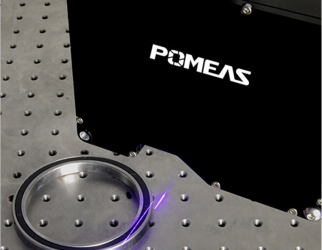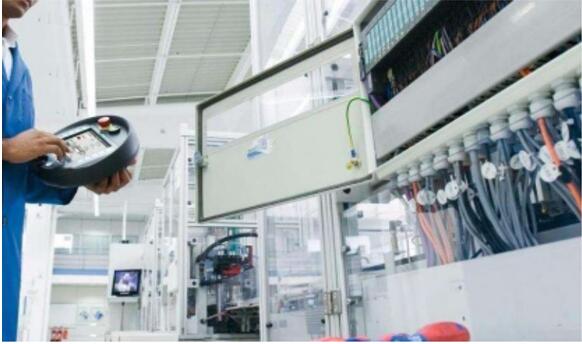Sensor Science: Pioneers of Information Acquisition in the Machine Vision Industry
In the intelligent world of machine vision industry, sensors are like sharp sensing tentacles, silently collecting all kinds of key information, giving machines the ability to “sense the environment and understand the world”. Unlike the simple sensing devices commonly found in daily life, sensors in the field of machine vision have become indispensable in many scenarios such as industrial automation and intelligent detection by virtue of their sophisticated technical principles and powerful functions.


Definition and Core Mission of Sensors
A sensor is a device or apparatus that can sense a prescribed measurement and convert it into a usable output signal according to a certain law. In the machine vision industry, its core mission is to convert various non-electrical signals in the physical world, such as light, heat, force, sound, etc., into electrical or digital signals that can be easily processed, transmitted and analyzed. For example, in industrial production lines, sensors used to detect the position and shape of objects can convert the light signals reflected by the objects into electrical signals, which can then be analyzed by subsequent signal processing and algorithms to achieve accurate positioning and identification of the objects. This ability to convert physical quantities into electrical signals is like opening a “window” for the machine vision system to perceive the world, and is the starting point for the whole system to obtain external information.
How Sensors Work
Sensors work on the basis of a variety of physical, chemical and biological effects, the essence of which is to realize the conversion of energy. Take the common photoelectric sensor as an example, it utilizes the photoelectric effect, when the light irradiates the photosensitive element of the sensor, the energy of the photon excites the electrons in the photosensitive element, generating photogenerated carriers, which in turn form an electrical signal. Different types of sensors are based on different effects, such as the piezoresistive effect, the piezoelectric effect, and the thermoelectric effect. Piezoresistive sensors utilize the piezoresistive effect, when subjected to pressure, its internal resistance value will change, through the measurement of the change in resistance value will be able to know the size of the pressure; Piezoelectric sensors are based on the piezoelectric effect, when subjected to mechanical stress, it will be generated on the surface of the charge, so that the mechanical stress is converted into an electrical signal. These different effects provide a theoretical basis for sensors to realize diverse measurement functions.
After the completion of the signal conversion, the sensor output signal is often weak, and may be mixed with noise, so it needs to be amplified by the signal conditioning circuit, filtering and other processing, will be converted into a standard signal suitable for subsequent equipment processing, and then transmitted to the processor or control system for further analysis and decision-making .
Common Types of Sensors
There is a wide range of sensors in the machine vision industry, which can be categorized into the following three types according to their detection principles and application scenarios:
- Photoelectric sensor: It is one of the most widely used sensors, which detects the presence or absence of an object, position, distance and other information by transmitting and receiving light signals. Common photoelectric sensors include the convection type, diffuse reflection type and specular reflection type. Counter-reflective photoelectric sensor consists of a transmitter and receiver, when there is an object blocking the light between the transmitter and receiver, the sensor will trigger the signal; diffuse reflective photoelectric sensor relies on the light reflected from the object to detect the object, without a separate receiver; specular reflective photoelectric sensors through the mirror will be the light emitted by the transmitter is reflected back to the receiver, when there is an object to block the reflected light, the sensor When there is an object blocking the reflected light, the sensor will work. Photoelectric sensors have the advantages of fast response speed, long detection distance, non-contact measurement, etc., commonly used in the counting of objects, positioning and sorting and other scenes .
- Image Sensor: It is the core component of the machine vision system, which converts optical images into electrical or digital signals, and then forms images that can be processed by the computer. Common image sensors are charge-coupled device (CCD) and complementary metal-oxide semiconductor (CMOS). CCD sensors are characterized by high sensitivity, low noise, and can obtain high-quality images, but at a higher cost and higher power consumption; CMOS sensors have the advantages of low power consumption, high integration, low cost, and fast reading speed, and with the continuous development of the technology, their image quality is also being continuously improved, gradually becoming the mainstream choice in the field of machine vision. With the continuous development of technology, its image quality is also improving, and gradually become the mainstream choice in the field of machine vision.
- Laser Sensor: Measurement using laser technology, by transmitting a laser beam and receiving the reflected light, the distance, position, shape and other information of the object is calculated according to the propagation time or phase change of the light. Laser sensors are characterized by high accuracy, fast measurement speed and strong anti-interference ability, and play an important role in three-dimensional modeling, object contour measurement, precision positioning and other fields. For example, in automobile manufacturing, laser sensors can be used to detect the size and shape of the car body to ensure that the body meets the design standards .
Application Scenarios for Sensors in the Machine Vision Industry
1. Industrial production field: Sensors are used for product quality inspection, production process monitoring and automated assembly. For example, in the production line of electronic products, image sensors can detect the welding quality of the components on the circuit board, by comparing the standard image, to quickly identify defects such as false soldering, leakage of soldering, etc.; photoelectric sensors are used to detect the position and number of products, to realize automated sorting and packaging .
2. Logistics industry: sensors help the intelligent sorting of goods and warehouse management. Laser sensors can measure the size and volume of goods to provide data support for logistics and transportation; photoelectric sensors can detect the position and movement of goods to realize automated conveying and sorting.
3. Medical field: Sensors play an important role in medical imaging diagnosis, surgical navigation and so on. For example, in medical imaging equipment, image sensors can transform the information inside the human body into images, providing a basis for the doctor's diagnosis; laser sensors can assist the surgical robot to carry out precise surgical operations, improving the safety and success of surgery.
4. Scientific research: Sensors are used for the collection and monitoring of various experimental data. Whether it is physical and chemical changes in the micro world, or macro-environmental ecological data collection, sensors can play its advantage of accurate measurement, to provide reliable data support for scientific research.
Synergistic relationship between the sensor and the rest of the machine vision system
In a machine vision system, the sensor does not work independently, but works closely with the lens, image processing software, actuators and other equipment to accomplish complex vision tasks. The sensor is responsible for collecting raw information, and the lens images the target object clearly on the sensor, ensuring that the sensor can obtain high-quality images or signals. The image processing software analyzes and processes the signals output from the sensor, extracts useful information such as the shape, color, and position of the object through various algorithms, and makes decisions accordingly. The actuator, according to the decision-making instructions of the image processing software, completes specific operations, such as rejecting unqualified products, accurately grasping objects, etc. . This mode of cooperative work makes the machine vision system able to complete various tasks efficiently and accurately, realizing the intelligence and automation of industrial production.
Sensors, as the pioneer of information acquisition in the machine vision industry, provide key sensing capabilities for machine vision systems with their diverse types, unique working principles and wide range of application scenarios. For newcomers in the machine vision industry, understanding the basic concepts, working principles, types and applications of sensors is an important foundation for in-depth study and mastery of machine vision technology.
Product recommendation
TECHNICAL SOLUTION
MORE+You may also be interested in the following information
FREE CONSULTING SERVICE
Let’s help you to find the right solution for your project!


 ASK POMEAS
ASK POMEAS  PRICE INQUIRY
PRICE INQUIRY  REQUEST DEMO/TEST
REQUEST DEMO/TEST  FREE TRIAL UNIT
FREE TRIAL UNIT  ACCURATE SELECTION
ACCURATE SELECTION  ADDRESS
ADDRESS Tel:+ 86-0769-2266 0867
Tel:+ 86-0769-2266 0867 Fax:+ 86-0769-2266 0867
Fax:+ 86-0769-2266 0867 E-mail:marketing@pomeas.com
E-mail:marketing@pomeas.com
